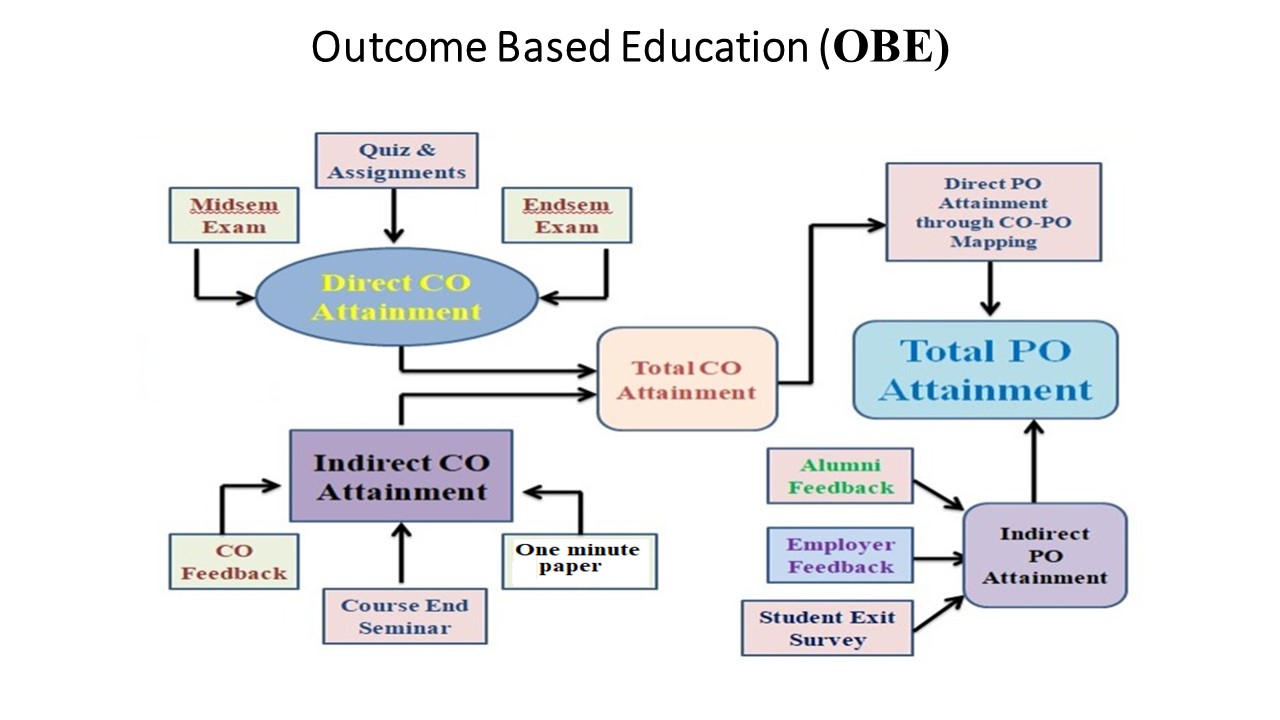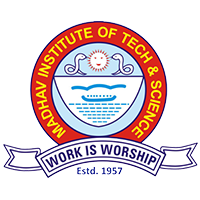Outcome-based education (OBE)
Outcomes-based education (OBE) is a process that involves the restructuring of curriculum, assessment, and reporting practices in education to reflect the achievement of high-order learning and mastery rather than the accumulation of course credits. 
Step 1: Institution’s Vision & Mission
Institutions need to decide on a short-term goal as well as a long-term goal in terms of students' learning outcomes, personal growth, skill development, and the institution’s overall performance. so that the higher aim of the entire institution could be achieved within a specified time. Department can formulate its vision and mission in aligned with Institute’s Vision and Mission
Institutions can follow the given steps to define their vision & mission: department-wise.
- Brainstorming sessions with experts & experienced faculty of various departments
- Speaking to industry professionals and alumni batches
- Analyzing the opinions and deciding on a solid plan of action
Step 2: Establishing The Program Educational Objectives & Program Outcomes
Program Educational Objectives (PEOs): Program educational objectives (PEOs) specify the expected outcomes of students once they graduate, mostly the way they conduct their behavior & ethics and excel in their careers.
Following an approach to establishing the PEOs for institutions.
- Institutions need to consider the vision & mission statements and prepare a plan of action to achieve PEOs.
- Experienced faculty members and the Head of the Department (HOD) must create a draft and share it across the departments.
- The points mentioned in the draft & processes that need to be implemented can be discussed for gaining the approval of authorities.
- The final draft prepared after taking the views of everyone in consideration should be presented to the Program Assessment Committee so that they can further forward it to the Departmental advisory Board.
- The Departmental Advisory Board reviews the points and sends the draft to the Board of Studies and Academic Council for final approval. Once the institution gets approval, they need to design a curriculum that can help students grow personally as well as professionally.
- Institutions need to analyze the student learning outcomes periodically to identify the learning gaps and rectify them.
Step 3: Establishing The Program Outcomes (POs)
Program Outcomes (POs): Program outcomes can be defined as the objectives achieved at the end of any specialization or discipline. These attributes are mapped while a student is doing graduation and determined when they get a degree.
Following an approach to establishing the POs for institutions.
- The Program Coordinator consults with the senior faculty members and prepares a draft mentioning the POs.
- The Program Coordinator also speaks to the students that belong to the Alumni batch, industry representatives, and various employers to understand the requirement of current industry & trends. On analyzing the views, he/she edits the draft and sends it to the Program Assessment Committee.
- The Program Assessment Committee reviews the draft and sends it to the Department Advisory Board to get final approval from them.
- Department Advisory Board makes the final decision by moderating the draft.
Step 4: Establishing The Course Outcomes
Course Outcomes (COs): Course outcomes are the objectives that are achieved at the end of any semester/year. For instance, if a student is studying a particular course then, the outcomes would be concluded on the basis of the marks or grades achieved in theory and practical lessons.
| Outcome-Based Education Manual |









